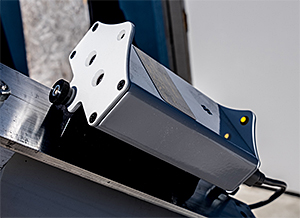Whether or not an eclipse is going to happen, if you are going to observe the sun with a telescope, the first problem you might encounter is how to line up on the sun. With a solar filter on, nothing can be seen through the telescope until you are are actually looking directly at the sun. A finder scope meant for night use is not helpful, and may actually be dangerous if uncovered and pointed at the sun.
Several products are available commercially, such as the (Televue "Sol Searcher") but this is expensive for what you get, and adds another awkwardly protruding device to stick onto your telescope.

Hinode solar guider with built-in sun finder
Basically all sun finders work in the same way -- a front end casts a shadow on a rear screen. When the shadow of the front sight is centered on the rear screen, the telescope is lined up on the sun well enough to be seen in the telescope with a low power eyepiece. The photo at right shows the sun pointer built into the body of the Hinode solar autoguider. The front end has a hole which allows light from the sun to fall onto the rear screen. When that light is centered on the rear screen (marked by the yellow dot), the telescope is lined up on the sun. Note that this is not a focused image of the sun, so don't expect to see sunspots on the rear screen!
On many telescopes, it's perfectly fine to simply watch the shadow the telecope against the ground. The empty rings of the night-time finder scope mount, for example, can be conveniently used. When the shadow of the front and rear rings are lined up, the sun should be visible in the telescope.

Sometimes, however, the telescope shadow technique is hard to use -- the ground may be uneven, making it difficult to see the shadow.
In this case you may want to make a simple, no-cost sun finder by just cutting out two small pieces of cardboard (a file folder works well), and stick them to your telescope rings. Cut a notch in the center of the front sight and leave the rear one solid and stick it to your scope rings with double-sided tape as shown in the photo at right. Now you have an unobtrusive device to point your telescope at the sun. Just line up the shadow of the front sight on the rear one and you should have the sun in your telescope's field of view.

